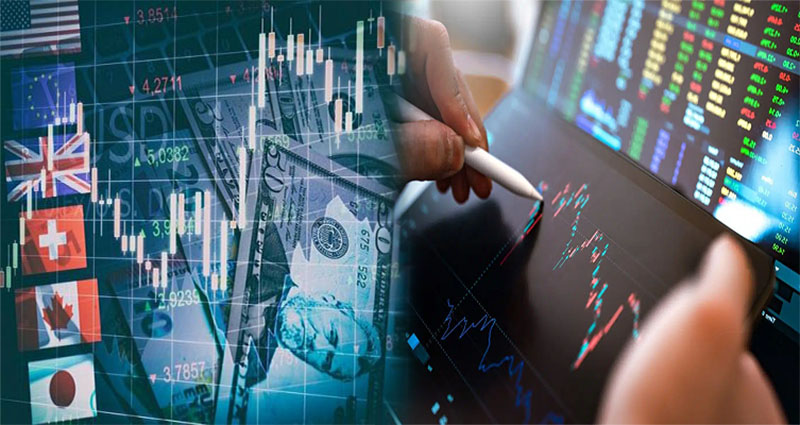The global Forex market, also known as the foreign exchange market, is the largest and most liquid financial market in the world. With trillions of dollars traded daily, it offers traders the opportunity to profit from currency fluctuations by exchanging one currency for another. Unlike traditional stock markets, Forex operates 24 hours a day, five days a week, and spans across time zones, making it a truly global market. To succeed, traders must understand not only the mechanics of Forex but also the key factors driving currency markets worldwide.
The Structure of the Global Forex Market
The Forex market has no central location, making it decentralised and accessible from anywhere in the world. Trading occurs in major financial hubs, including New York, London, Tokyo, and Sydney, with each hub representing a different trading session. London is the largest, accounting for nearly 40% of global trading volume, while New York and Tokyo also play significant roles.
The Forex market operates in three primary sessions—Asian, European, and North American—each with unique characteristics. During the overlapping hours between the London and New York sessions, market liquidity and volatility typically increase, offering traders more trading opportunities. However, it’s crucial to remember that high volatility can also increase risk.
The market is made up of various participants, including central banks, financial institutions, corporations, hedge funds, and retail traders. To participate effectively, traders often rely on a forex trading broker, which acts as the intermediary, providing access to the market and the necessary trading platforms. Each broker offers varying levels of service, spreads, and access to leverage, making it essential for traders to choose the right one for their strategy.
Key Global Currencies and Currency Pairs
The Forex market revolves around trading currency pairs, with major pairs being the most commonly traded. These include the U.S. dollar (USD), the euro (EUR), the Japanese yen (JPY), the British pound (GBP), the Australian dollar (AUD), and the Swiss franc (CHF). These currencies represent the largest economies and are considered highly liquid, which means they are easier to buy and sell without causing large price movements.
In addition to the major currency pairs, exotic pairs—such as the South African rand (ZAR) or the Brazilian real (BRL)—offer traders exposure to emerging markets. While trading exotic pairs can yield high returns, they also carry higher risk due to lower liquidity and greater price volatility. Traders dealing with these currencies need to account for factors like political instability and economic uncertainty.
Currency strength is often a reflection of a country’s economic health and the stability of its financial system. Strong economies with stable political environments tend to have more resilient currencies, making them attractive to Forex traders looking for consistency.
Economic and Political Factors Driving Global Forex Markets
Forex markets are driven by various economic and political factors that influence the supply and demand for currencies. Global economic indicators such as interest rates, inflation, gross domestic product (GDP), and employment data are key drivers of currency values. For instance, rising inflation in a country may lead its central bank to increase interest rates, which can strengthen its currency by attracting foreign investment.
Geopolitical events also play a critical role in Forex trading. Elections, trade wars, and international conflicts can cause significant fluctuations in currency markets. For example, the uncertainty surrounding Brexit created volatility for the British pound, as investors were unsure how the political outcome would impact the U.K. economy.
Monetary policies implemented by central banks, such as the U.S. Federal Reserve or the European Central Bank, are another major factor. Central banks control the money supply and interest rates in their respective countries, which directly affects the value of their currencies. A hawkish stance from a central bank, signalling higher interest rates, typically strengthens a currency, while dovish policies may lead to a weakening.
Forex Trading Strategies for Navigating Global Markets
Navigating the complexities of global Forex markets requires a strategic approach. Technical analysis, for example, is a common method traders use to predict future price movements based on historical data. By analysing charts and trends, traders can identify patterns such as moving averages or the Moving Average Convergence Divergence (MACD) indicator to make informed decisions.
Fundamental analysis, on the other hand, focuses on macroeconomic data and global news. Traders who employ this strategy monitor global events, such as interest rate changes or trade agreements, to determine how they might influence currency prices. News events, particularly those involving major economic powers, can lead to rapid market reactions. Traders must be prepared to react quickly to capitalise on sudden price movements or protect their positions from adverse changes.
Risk management is an essential aspect of Forex trading, especially in a market as volatile as Forex. Traders should implement stop-loss orders and carefully manage position sizes to protect their capital. Diversifying trading strategies and currency pairs is also crucial for mitigating risk across different global markets.
Conclusion
Global Forex trading is a complex and dynamic market that requires traders to stay informed and strategic. Understanding the factors that drive currency markets, from economic indicators to geopolitical events, is essential for navigating the global Forex landscape. By utilising a combination of technical and fundamental analysis, managing risk effectively, and staying compliant with regulatory requirements, traders can find success in this ever-evolving market.











